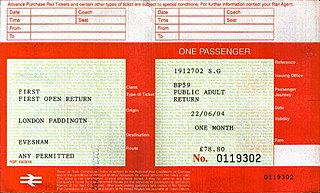CRS may refer to:
CRS may refer to:
CSS, or Cascading Style Sheets, is a language used to describe the style of document presentations in web development.
CCC may refer to:
CIS may refer to:
CMS may refer to:
SRS or SrS may stand for:

Rubella, also known as German measles or three-day measles, is an infection caused by the rubella virus. This disease is often mild, with half of people not realizing that they are infected. A rash may start around two weeks after exposure and last for three days. It usually starts on the face and spreads to the rest of the body. The rash is sometimes itchy and is not as bright as that of measles. Swollen lymph nodes are common and may last a few weeks. A fever, sore throat, and fatigue may also occur. Joint pain is common in adults. Complications may include bleeding problems, testicular swelling, encephalitis, and inflammation of nerves. Infection during early pregnancy may result in a miscarriage or a child born with congenital rubella syndrome (CRS). Symptoms of CRS manifest as problems with the eyes such as cataracts, deafness, as well as affecting the heart and brain. Problems are rare after the 20th week of pregnancy.
IR or Ir may refer to:
ABS or Abs may refer to:
Cts or CTS may refer to:
CAS may refer to:
Computer reservation systems, or central reservation systems (CRS), are computerized systems used to store and retrieve information and conduct transactions related to air travel, hotels, car rental, or other activities. Originally designed and operated by airlines, CRSs were later extended for use by travel agencies, and global distribution systems (GDSs) to book and sell tickets for multiple airlines. Most airlines have outsourced their CRSs to GDS companies, which also enable consumer access through Internet gateways. Modern GDSs typically also allow users to book hotel rooms, rental cars, airline tickets as well as other activities and tours. They also provide access to railway reservations and bus reservations in some markets, although these are not always integrated with the main system. These are also used to relay computerized information for users in the hotel industry, making reservation and ensuring that the hotel is not overbooked.
A passenger name record (PNR) is a record in the database of a computer reservation system (CRS) that contains the itinerary for a passenger or a group of passengers travelling together. The concept of a PNR was first introduced by airlines that needed to exchange reservation information in case passengers required flights of multiple airlines to reach their destination ("interlining"). For this purpose, IATA and ATA have defined standards for interline messaging of PNR and other data through the "ATA/IATA Reservations Interline Message Procedures - Passenger" (AIRIMP). There is no general industry standard for the layout and content of a PNR. In practice, each CRS or hosting system has its own proprietary standards, although common industry needs, including the need to map PNR data easily to AIRIMP messages, has resulted in many general similarities in data content and format between all of the major systems.
In airline reservation systems, a record locator is an alphanumeric or alpha code used to identify and access a specific record on an airline’s reservation system. An airline’s reservation system automatically generates a unique record locator whenever a customer makes a reservation or booking, commonly known in the industry as an itinerary. When an itinerary is entered into the reservation system it is commonly known as a passenger name record (PNR). An itinerary may be entered into the system by a passenger, travel agent or airline employee.

AJENTS is one of the two original computer-based railway ticket issuing systems supplied to travel agencies in Britain. It allows agencies which are not connected to one of the major GDS networks to issue and print railway tickets from a standard personal computer, and submit revenue and accounting data securely to Rail Settlement Plan Ltd for allocation to the appropriate train operating companies.
Ars or ARS may refer to:
Airline reservation systems (ARS) are systems that allow an airline to sell their inventory (seats). It contains information on schedules and fares and contains a database of reservations and of tickets issued. ARSs are part of passenger service systems (PSS), which are applications supporting the direct contact with the passenger.
Galileo is a computer reservations system (CRS) owned by Travelport. As of 2000, it had a 26.4% share of worldwide CRS airline bookings.

TravelSky Technology Limited is the dominant provider of information technology services to the Chinese air travel and tourism industries. Its clients include airlines, airports, air travel suppliers, travel agencies, individual and corporate travel consumers and cargo services. It is listed on the Hong Kong stock exchange and its majority shareholder or parent group is the China TravelSky Holding Company, a State-owned enterprise (SOE).

Constriction ring syndrome (CRS) is a congenital disorder with unknown cause. Because of the unknown cause there are many different, and sometimes incorrect names. It is a malformation due to intrauterine bands or rings that give deep grooves in, most commonly, distal extremities like fingers and toes. In rare cases the constriction ring can form around other parts of the fetus and cause amputation or even intrauterine death. The anatomy proximal to the site of constriction is developmentally normal. CRS can be associated with other malformations with club foot being most common. The precise configuration of the bands, lymphedema, and character of the amputations are not predictable and vary with each individual patient. Also more than one extremity is usually affected, and it is rare for only one ring to present as an isolated malformation with no other manifestation of this syndrome.